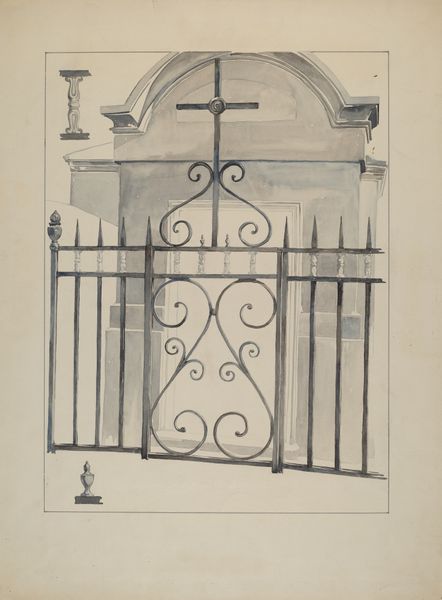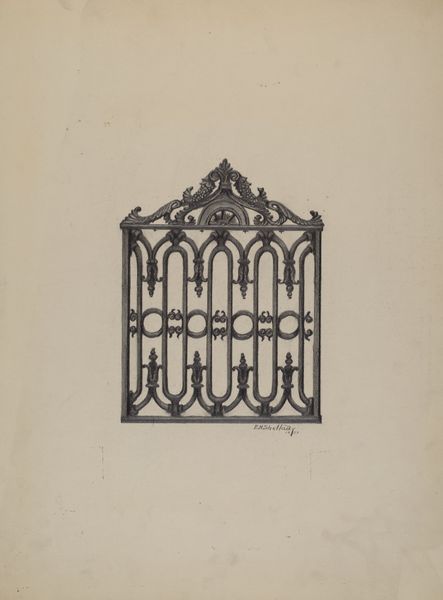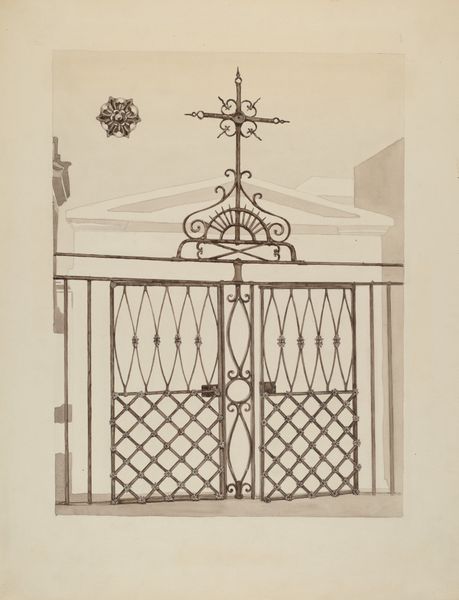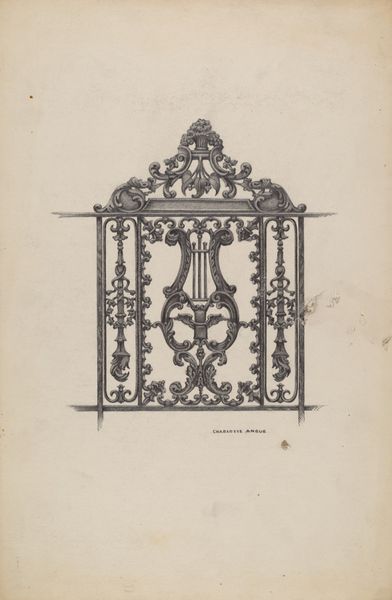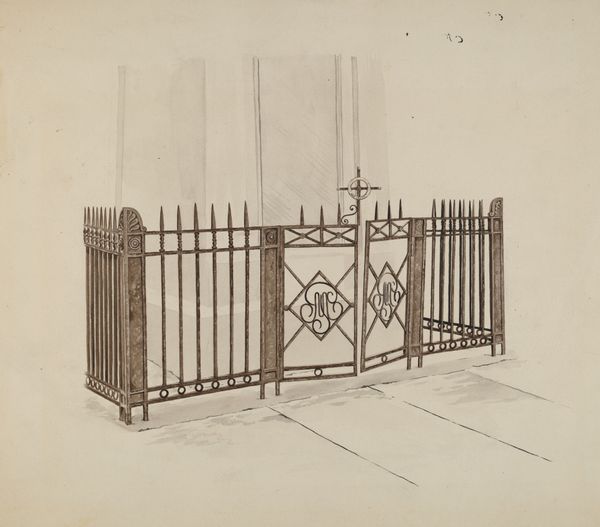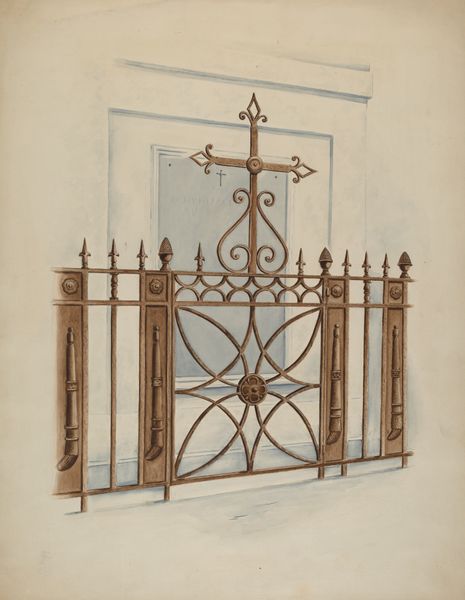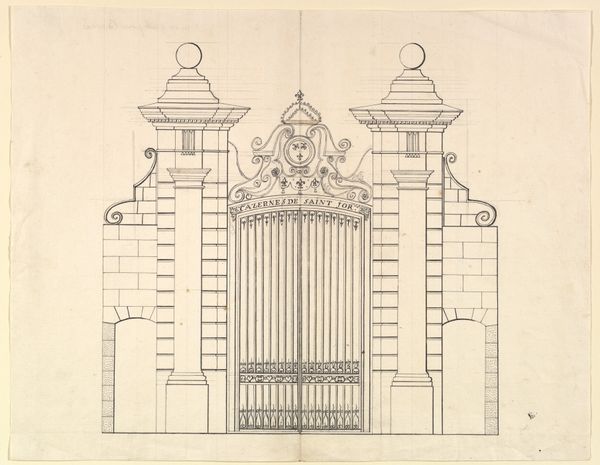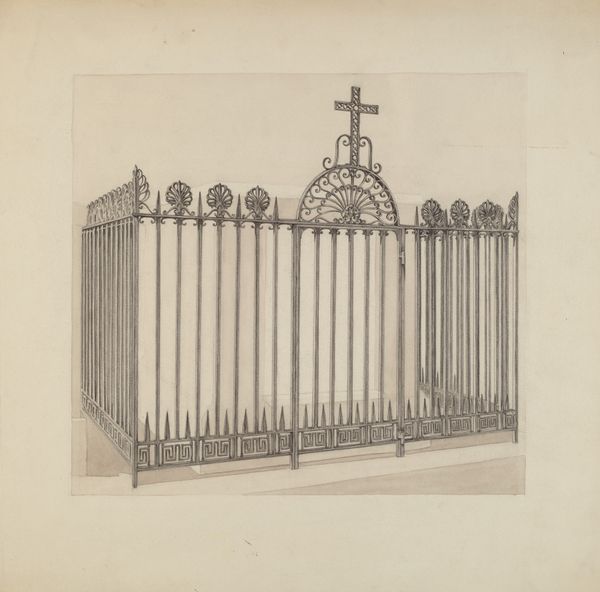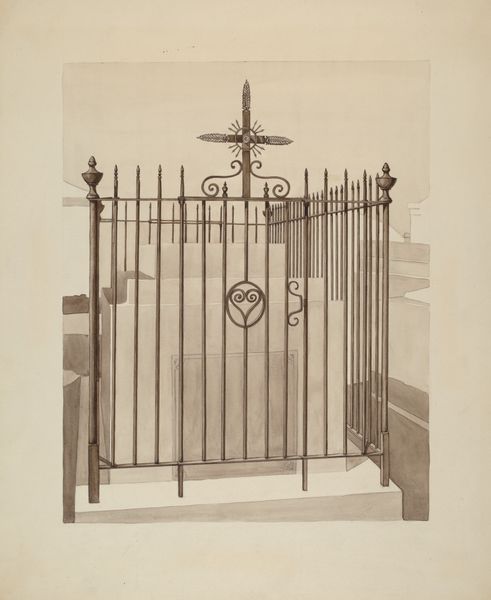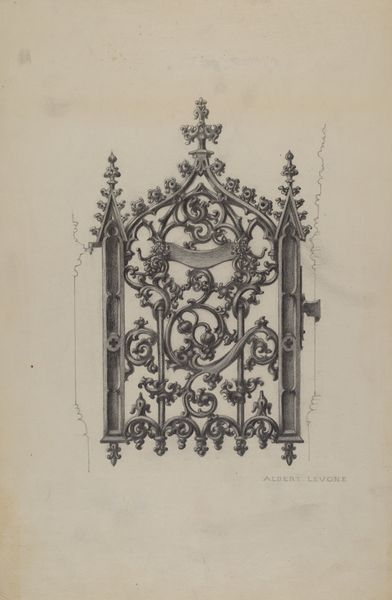
drawing, pencil
#
drawing
#
landscape
#
etching
#
geometric
#
pencil
#
line
#
academic-art
#
watercolor
Dimensions: overall: 43.3 x 30.5 cm (17 1/16 x 12 in.)
Copyright: National Gallery of Art: CC0 1.0
Editor: This is Clarence Dawson's "Iron Gate," created around 1941 using pencil and watercolor. There's something stark about the drawing, the gate appears both decorative and forbidding at the same time. What social implications might this artwork carry, specifically when thinking about access and exclusion? Curator: I think you've already hit on something essential: the gate as a loaded symbol. Given that context, let's think about 1941 – what was happening then? How might anxieties about access, boundaries, and even national identity manifest in such a seemingly simple image? Who is being kept out? Editor: World War II was underway, and America was still grappling with its own internal conflicts related to race and class. So perhaps the gate speaks to those divisions and uncertainties on multiple levels? I didn't consider wartime anxieties. Curator: Precisely. And what about the style? Does the academic approach, with its emphasis on precise lines, further reinforce a sense of order and control, or perhaps a desire for it in a chaotic world? And the iron, itself: is it protecting or imprisoning? Editor: The precision does add a layer of enforced order, almost like a diagram instead of a welcoming entry. The "watercolor" seems almost like an afterthought here. I also hadn’t considered the implications of iron as a structural choice. It makes me consider the difference between saying "gate" and "iron gate." Curator: Exactly. These layers of historical and social context intertwine to reveal the gate not just as an architectural feature but as a reflection of deeper societal forces. Do you see the visual stain in the lower-right? It contrasts markedly with the perfect geometries of the line drawing, and to me, it hints at the fragility of constructed binaries and order, especially in times of global conflict. Editor: Absolutely, and I now notice that the lines of the adjacent columns are incomplete and sketchy in contrast. It's interesting how a seemingly straightforward image becomes a complex intersection of history, materials, and social commentary. Curator: Right! It reminds us that even in apparent simplicity, art is always speaking to the complexities of the human experience and is rarely apolitical.
Comments
No comments
Be the first to comment and join the conversation on the ultimate creative platform.
